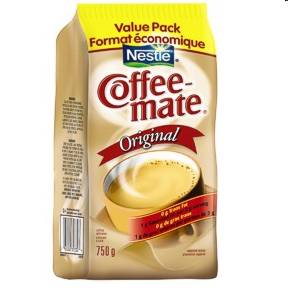 Image via Wikipedia
Image via WikipediaHigh fructose corn syrup is one of a number of things in food that I avoid like the plague – I’m really no fan of any form of processed food and prefer to buy my ingredients raw, basic and ready to cook from scratch.
HFCS is a nasty, insidious ingredient in much processed food, particularly of American origin (over 55% of all sweetener in the USA, which means the average American consumes something over 60 pounds of the stuff a year) but also favoured by high volume food processors around the world. It’s basically the cheapest form of highly processed sweetener that’s not aspartame and the scientists behind processed food (many of whom, I suspect, would hesitate to eat their own creations) love it because shareholders love cheap and we
all love sweet. We lurve da fat, we lurve da sweet.
HFCS is
produced, oddly enough, from corn, typically Genetically Modified corn because of the vast production of GM corn in America and a range of subsidies that make this gloop cheaper than real sugar there. The corn is ground up to produce cornstarch. This is mixed with water to make a slurry treated with the addition of a number of enzymes including alpha-amylase (also used in bread improvers and detergents) and Xylose isomerase. Nice, eh?
With 58% of Americans citing a level of concern over the ingredient, thanks in no small part to a number of exposes, documentaries and public information efforts carried out over the Internet, it’s little wonder that the people that make this awful shite are feeling the pinch. In fact, demand for the instant fix sugar rush that many have blamed for America’s rise to becoming the earth’s Most Morbidly Obese Nation has dropped to the lowest level in twenty years. Which is no bad thing, really.
Now the American Corn Refiner’s Association, reacting to this drop in popularity, wants to give High Fructose Corn Syrup a quick image-buffing and
rename it “Corn Sugar”. The idea is that the evil High Fructose Corn Syrup tag on the packaging that scares moms away gives way to nice, friendly ‘corn sugar’, because HFCS, says the ACRA, is
just the same as sugar.
This isn’t the first time the Association has tried. Two years ago it launched a major PR initiative, “Changing the Conversation about High Fructose Corn Syrup” which aimed to characterize HFCS as a ‘natural’ product. Critics point out that a slurry of genetically modified cornstarch treated with enzyme infusions (themselves containing synthetic chemicals) is hardly natural. Sadly for the PR effort, the FDA agreed with the critics and a
spokesperson said that HFCS should not be labeled ‘natural’.
You only need to go to the Association’s current
corn sugar promoting website and see the pictures of happy families tucking into mountains of fruity goodness to know that there is a fundamentally evil force at work here. Click on the video and wander through fields of lovely corn with a slick, pretty actress, oh sorry, “A mother navigates through a maze of confusing information and learns whether it’s corn sugar or cane sugar, your body can’t tell the difference.”
Amusingly, someone's been trying to edit the
Wikipedia entry for High Fructose Corn Syrup to introduce the 'Corn Sugar' name, but the Wikipolice are on top of it.
To my immense amusement, the sister website to the insidious
SweetSurprise.com,
cornsugar.com is blocked by Etisalat. I can only imagine it's something to do with corn dogging, but then second guessing Etisalat is a surefire trek down the road to flailing insanity.
But of course the argument’s not really about whether this awful, processed syrupy gloop is natural or not. And, perhaps surprisingly, it’s not about whether HFCS ‘short cuts’ the body’s satiety response and leads directly to obesity. It’s about the fact that the stuff is absolutely everywhere – particularly in sodas which are responsible, apparently, for some two thirds of its total consumption in the US. Some manufacturers, including Snapple, Coke and ketchup maker Hunts have removed it from their products, but HFCS is in drinks, bread (particularly processed brown breads. I mean, you really, really do
not want to know what’s in Subway’s ‘wheat bread’, but I can tell you HFCS is the fourth largest component of the stuff), fruit mixes, lollies, cakes, biscuits, chocolates, crisps, soups, yoghurts and ice cream. In short, if it’s a processed food, it could well be delivering you a belt of gloop.
Thank God we at least have regulations that insist on products carrying a label with a full list of ingredients by weight, so it's there to see on the label. Whatever they call it.
BTW, other 'Yew, is that what's in my food?' related posts include this one on what's in Pringles and this one over at The Fat Expat on Palm Oil.



